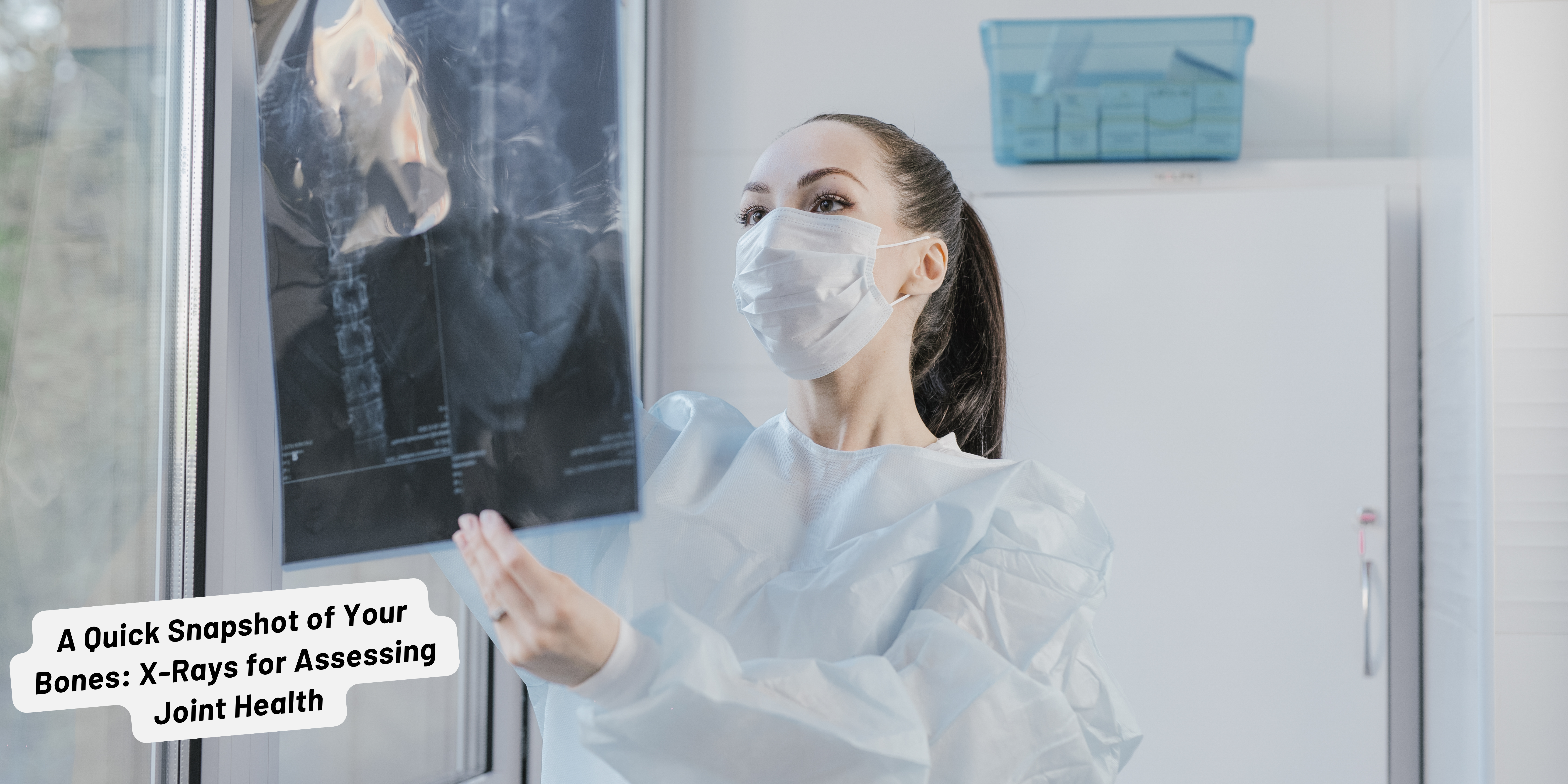Our bones provide the strong framework that supports, structures, and shields our organs. They are also essential for movement, coordinating with muscles and joints to allow us to run, walk, and carry out daily tasks. However, fractures, illnesses, and general wear and tear may affect bones and joints just like they do any other portion of the body. When joint pain disrupts your daily life, an X-ray can be a valuable tool for your doctor to assess the situation and determine the cause.
What is an X-ray?
An X-ray is a kind of imaging exam that uses electromagnetic radiation to provide an accurate visualization of the body’s interior components. X-rays are particularly adept at visualizing bones due to their high calcium content. Calcium readily absorbs X-ray radiation, appearing white in the resulting image. Conversely, soft tissues like muscles, fat, and organs absorb less radiation, showing up as various shades of gray.
How Does an X-ray Help Assess Joint Health?
During an X-ray procedure, a radiologic technologist will position the targeted joint, typically using a specialized stand or table. Depending on the specific joint being examined, multiple X-rays might be taken from different angles to provide a comprehensive view. The resulting images offer a wealth of information for your doctor to evaluate:
Bone fractures: X-rays excel at detecting fractures, both recent and old. A clear break in the bone’s continuity will be evident in the image.
Joint alignment: The X-ray can reveal any misalignments within the joint, such as dislocations or subluxations (partial dislocations).
Arthritis: X-rays may diagnose rheumatoid arthritis and osteoarthritis or wear-and-tear arthritis. X-rays may reveal bone degradation, osteophytes, or narrowing of the joint space—all indications of arthritis.
Joint infections: Though less common, X-rays can sometimes identify signs of an infection within the joint, such as joint space widening or destruction of bone tissue.
Bone density: While not as sensitive as specialized bone density scans, X-rays can provide an initial assessment of bone density. Thinner bones may appear more translucent in the image, suggesting potential osteoporosis.
Benefits of X-rays for Joint Health Assessment
X-rays offer several advantages when it comes to evaluating joint health:
Quick and painless: An X-ray is a relatively quick procedure, often taking just a few minutes. Additionally, it’s a painless experience, with no needles or injections involved.
Readily available: X-ray machines are widely available in doctor’s offices, hospitals, and imaging centers, making them a convenient option for most patients.
Cost-effective: Compared to other imaging techniques like MRIs or CT scans, X-rays are a more affordable option.
Safe for most patients: X-rays involve minimal radiation exposure. However, it’s important to inform your doctor if you are pregnant or suspect pregnancy, as they may recommend alternative imaging methods with even lower radiation doses.
Limitations of X-rays
While X-rays are a valuable tool for joint health assessment, they do have some limitations:
Limited visualization of soft tissues: X-rays primarily focus on bones. They are not ideal for examining soft tissues like muscles, ligaments, or tendons, which can also contribute to joint pain.
Inability to assess inflammation: X-rays cannot directly detect inflammation within the joint, which can be a crucial factor in diagnosing certain conditions like arthritis.
When Might You Need an X-ray for Joint Health?
Your doctor may recommend an X-ray if you experience any of the following symptoms in your joints:
- Pain
- Swelling
- Stiffness
- Difficulty moving the joint
- Redness
- Deformity
- Recent injury
What to Expect During an X-ray
An X-ray is a straightforward procedure. Here’s a general overview of what to expect:
Consultation: Your doctor will talk to you about your medical history and symptoms. They will address any queries you may have and go over the X-ray process with you.
Preparation: You may be asked to remove any jewelry or clothing that could interfere with the X-ray image. Depending on the joint being X-rayed, you might need to wear a gown or drape. For some joints, like the hip, specific positioning instructions will be provided.
Imaging: The radiologic technologist will position you and the targeted joint near the X-ray machine. They will step behind a protective barrier and take the X-ray images. The process is quick and typically painless.
Results: A radiologist—a physician with expertise in medical imaging—will digitally collect and evaluate the X-ray pictures. Your doctor will review the report from the radiologist with you and provide recommendations for the next course of action, depending on the diagnosis.
Beyond the X-ray: Additional Imaging Techniques for Joint Health
While X-rays are a valuable first-line imaging tool for joint health assessment, other imaging techniques might be used in specific situations:
MRI (Magnetic Resonance Imaging): Strong magnetic fields and radio waves are used in magnetic resonance imaging (MRI) to produce finely detailed cross-sectional pictures of soft tissues, blood vessels, and bones. MRIs are particularly helpful for evaluating soft tissue injuries like ligament tears or meniscus tears in the knee.
CT Scan (Computed Tomography Scan): CT scans use X-rays to create detailed 3D images of the body. They can be helpful for visualizing complex bone fractures or evaluating joint alignment in certain situations.
Ultrasound: Ultrasound utilizes sound waves to create real-time images of soft tissues. While not commonly used for initial joint health assessment, ultrasounds can be helpful for guiding injections or examining specific soft tissue structures.
Conclusion
X-rays are a safe, quick, and cost-effective way for your doctor to gain valuable insights into your joint health. They can help identify fractures, joint misalignment, arthritis, and other potential causes of joint pain. While X-rays have limitations, particularly in visualizing soft tissues, they remain a crucial tool in the doctor’s arsenal for diagnosing joint conditions and guiding treatment plans. If you experience persistent joint pain, don’t hesitate to consult your doctor. An X-ray might be the first step towards a clearer picture of your joint health and a path to a pain-free future.
If you are looking to get your X-ray in NJ, consider Edison Imaging Center. It gives you a clear view of your bones and a brighter outlook for your joints.







